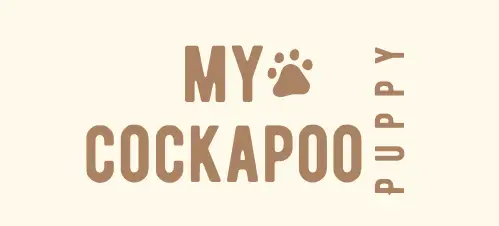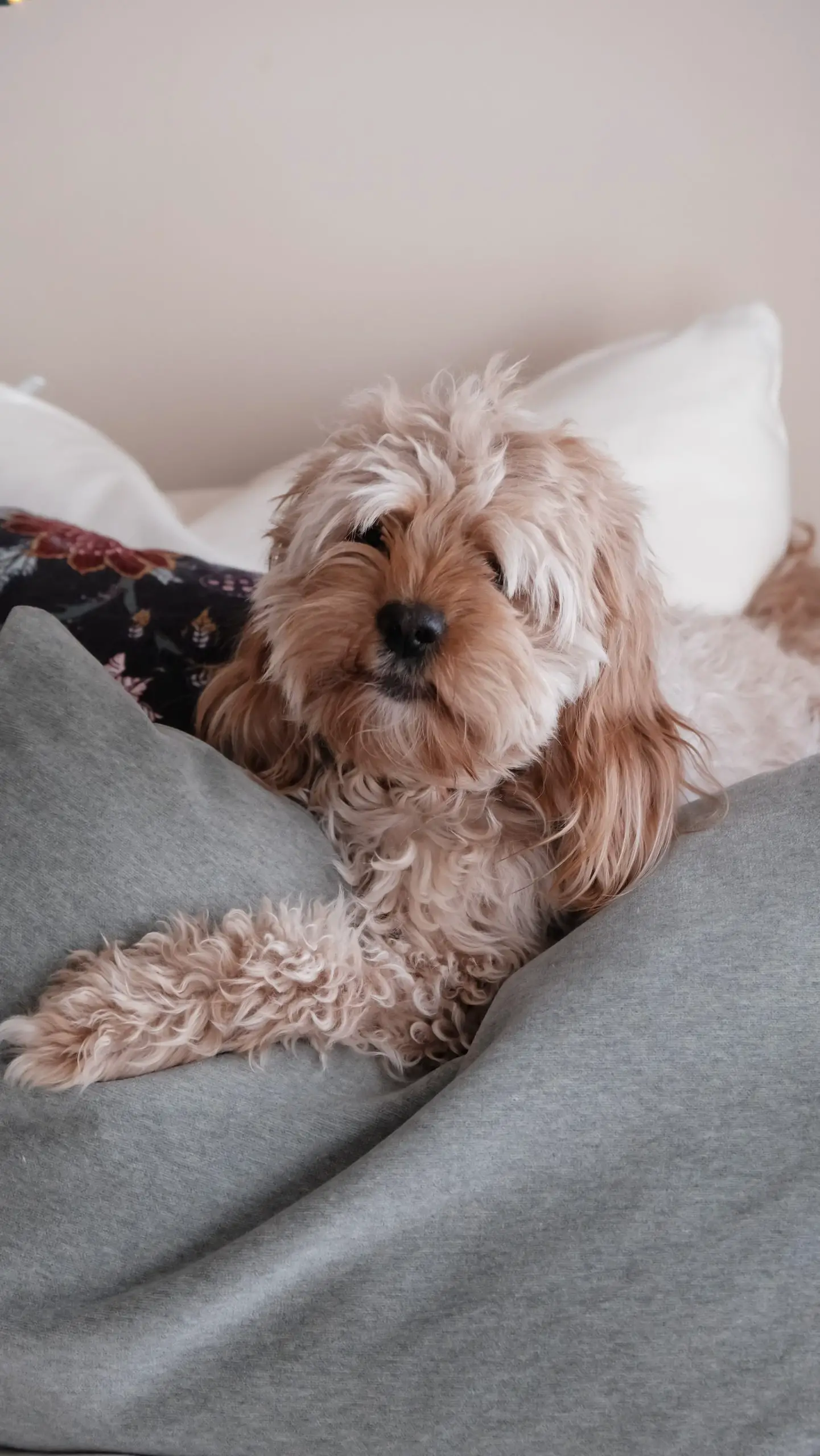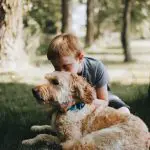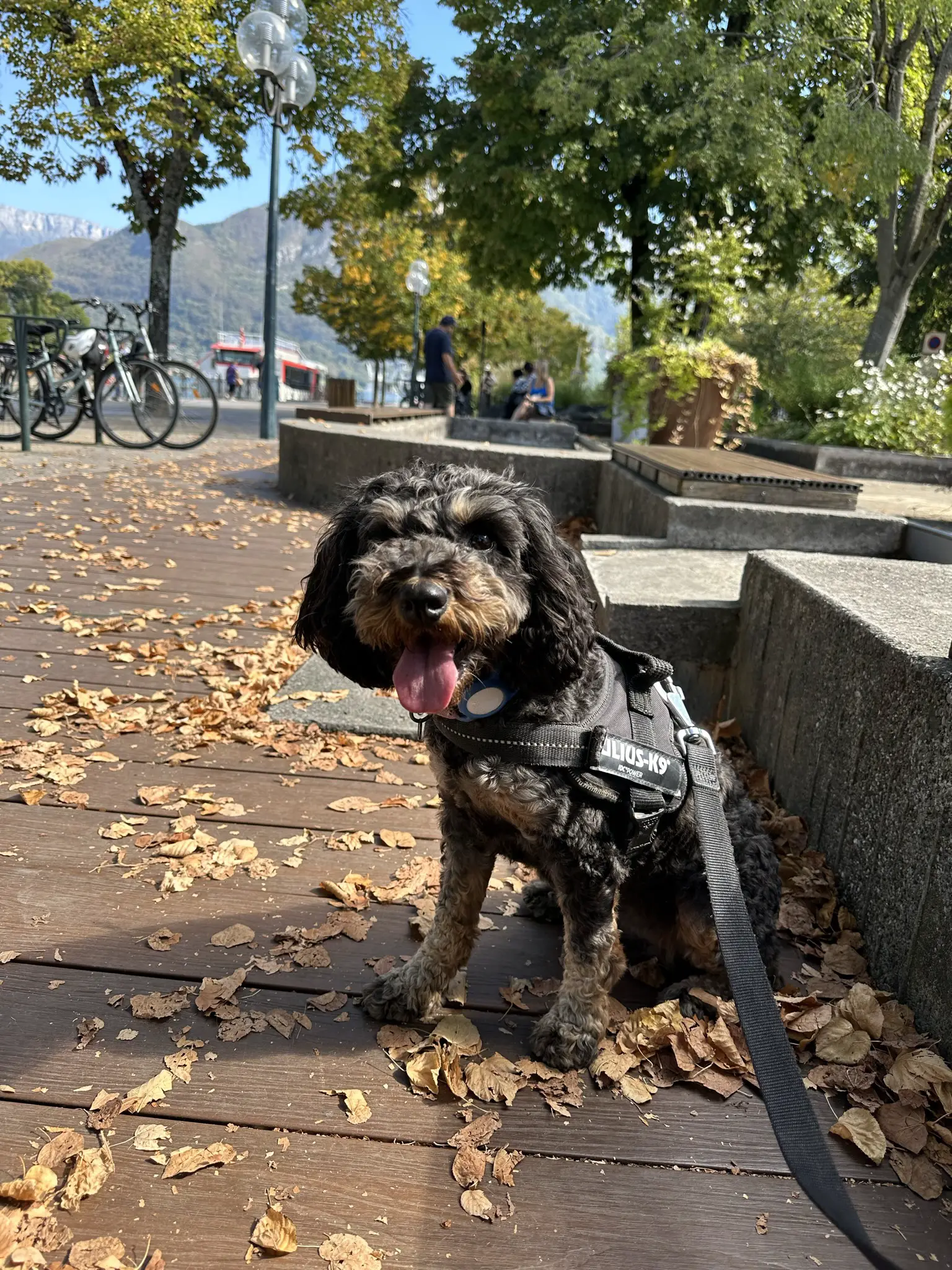Every Cockapoo owner knows the adorable, mischievous gleam in their puppy’s eyes all too well. These intelligent, playful, and loving dogs bring joy and warmth into our homes, making them an immensely popular breed in the UK. However, with all puppies comes the inevitable challenge: housetraining.
Understanding Your Cockapoo’s Needs
Cockapoos, with their spirited and affable nature, require specific attention when it comes to housetraining.
—Breed Specific Traits
With the poodle’s intelligence and the cocker spaniel’s boundless energy mingling in your Cockapoo’s genes, you’re dealing with a pup that’s not only smart but also occasionally stubborn. They are quick learners but require consistency and positive reinforcement to adhere to training effectively.
—Puppy Developmental Stages
Puppies typically start learning to control their bladder around 12 weeks of age. Understanding the developmental stages of your Cockapoo puppy, from their teething phase to their socialisation period, plays a pivotal role in framing your training strategy.
Beginning Housetraining
Ah, the initial days of housetraining, where the fragrant scent of puppy pads becomes a familiar note in your household symphony. Embarking on the journey of housetraining your Cockapoo necessitates a blend of preparedness, consistency, and a dollop of patience. The early days will be peppered with little triumphs and occasional mishaps, so let’s navigate through the starting phase with a steady paw and a watchful eye.
—Setup and Preparation
Embarking on the housetraining journey demands a well-structured setup and a sprinkle of preparedness. A crate, assuming the role of your pup’s cosy den, should be inviting, secure, and size-appropriate, allowing enough space for a comfy bed but not too spacious to encourage a potty corner. Contrarily, a vast area might suggest to your pup that it’s permissible to relieve themselves in one corner and snooze away in another. A supportive guideline would be to choose a crate where they can stand, turn around, and lie down without feeling constricted.
In tandem with crate training, puppy pads will be your ally in managing indoor accidents, acting as an interim potty spot while your pup masters the art of controlling their bladder. Strategically dot them around your living space, especially in areas where your fluffy mate frequently spends time. Simultaneously, an enzymatic cleaner should stand ready in your arsenal to tackle any accidental messes, ensuring no lingering odours invite a repeat performance.
In this preparatory phase, it’s wise to puppy-proof your living area, safeguarding your cherished items and providing a safe, chew-friendly environment for your pup. After all, curiosity didn’t just kill the cat; it led the puppy to a chewed-up favourite pair of shoes!
—Potty Training Schedule
A potty schedule is essential for successful housetraining. This schedule not only provides a structured routine for your pup but also serves to manage your expectations and keep a watchful eye on their progress.
Your schedule should mirror your pup’s daily activities, with designated potty breaks interwoven throughout. Key times to usher your little one towards their potty spot includes:
- Upon waking: Both in the morn and from naps.
- Post meals: A tummy filled with kibble will soon seek relief.
- After play: All that frolicking stirs up more than just excitement!
- Before bedtime: To encourage a (hopefully) uninterrupted sleep.
Remember, young pups have limited bladder control and will need frequent potty outings. Their tiny bladders, paired with a minimal holding capacity, will demand a trip outdoors (or to their designated potty spot) at least every two hours.
In these early stages, your vigilance will pay dividends in preventing accidents and swiftly establishing a routine. Keep a watchful eye for signs of an impending potty moment: circling, sniffing, or a sudden pause in play can all be indicators that it’s time for a quick dash to the designated spot!
Effective Housetraining Techniques
Effective techniques to navigate through this journey blend patience with strategy, ensuring your new furry pal understands the rules of potty etiquette.
—Positive Reinforcement
Embarking on the housetraining journey with a focus on positivity and rewards ensures a pleasant learning experience for your Cockapoo. Positive reinforcement involves showering your pup with love, praise, and perhaps a small treat whenever they successfully use their designated potty area. This method not only encourages repeated behaviour but also strengthens the bond between you and your puppy.
When your Cockapoo does its business at the assigned spot, react with genuine excitement! Use a cheerful voice, gentle petting, and offer a small treat as a reward. Such responses will engrave in your pup’s mind that potty time in the right place equals joy and goodies. Consistency is key, so ensure that every success is met with the same level of enthusiasm and reward.
—Using a Cue Word
Incorporating a cue word like “potty” or “wee-wee” during these triumphant moments can also be beneficial. When your pup is in the act of relieving themselves, softly say the cue word. Over time, your Cockapoo will associate the action with the word, allowing you to utilise the cue in future scenarios, such as when you’re in unfamiliar places or need them to potty before a long car journey.
—Timely Rewards
Timeliness in rewarding is crucial. Ensure that the praise or treat comes immediately after the act, not after they’ve returned inside or moved to a new activity. This immediate connection between the action and reward will solidify the positive association in their puppy brains.
—Dealing with Accidents
A vital part of housetraining revolves around handling the inevitable: accidents. When they occur, and they will, it’s essential to maintain a calm, non-reactive demeanour.
Do not scold or punish your Cockapoo after an accident has occurred. Puppies have a short memory span when it comes to associating reactions with actions, and they’re unlikely to understand why they are being reprimanded. Instead, quietly clean up the mess with an enzymatic cleaner, which helps to eliminate any lingering odours that might attract repeat performances.
If you catch them in the act, a gentle “No” or “Ah-Ah” followed by promptly taking them to their potty spot will suffice. If they continue there, offer praise and a reward.
—Learning from Mistakes
Take each accident as an opportunity to revisit and potentially revise your strategy. Are potty breaks frequent enough? Is there a pattern to the accidents? Understanding the “why” behind the mishap can offer insights into tailoring your approach, ensuring it aligns seamlessly with your Cockapoo’s needs.
Common Challenges
Housetraining can occasionally resemble a winding path rather than a straightforward route, particularly when manoeuvring through the common challenges that can arise. With Cockapoos being an intelligent yet sometimes stubborn breed, specific hurdles might pop up during the housetraining journey. Let’s delve into some of the predicaments you might encounter and map out solutions to navigate through them.
—Stubbornness and Resistance
Despite their renowned intelligence and typically eager-to-please disposition, Cockapoos can sometimes don a cape of stubbornness, particularly when it comes to potty training. This resistance can manifest in a reluctance to adhere to the potty routine or preferring indoor accidents over outdoor adventures.
Tackling the Issue: Consistency is your ally against stubbornness. Maintain a steady routine and be unwavering in your rules. Also, ensure that the rewards for compliance are more appealing than the satisfaction derived from resistance. This might involve exploring various treats or games to find what truly tickles your Cockapoo’s fancy.
—Fear or Anxiety
Some pups might associate negative experiences with the act of elimination, especially if they have been reprimanded for an accident in the past. This can instigate anxiety or fear around potty time, manifesting in hesitation to relieve themselves during designated breaks or preferring hidden spots around the home.
Tackling the Issue: Re-establish potty time as a stress-free, positive experience. Offer heaps of praise and rewards for successful eliminations and ensure any accidents are dealt with calmly and without negative reactions towards your pup.
—Inconsistencies in Routine
Cockapoos, with their intelligent minds, thrive on routine and consistency. If there are fluctuations in their potty schedule or variations in the rewards and responses they receive, it might brew a concoction of confusion and non-compliance.
Tackling the Issue: Maintain a consistent potty schedule and ensure that all members of the household are on the same page regarding rules, rewards, and routines.
—Undetected Medical Issues
Sometimes, the root of housetraining challenges might be veiled in undetected medical issues. Frequent accidents, sudden changes in elimination habits, or visible discomfort during potty time might be red flags indicating an underlying health concern.
Tackling the Issue: Consult with a veterinarian to rule out any potential medical causes behind the housetraining hurdles, ensuring your approach is both safe and appropriate for your pup’s well-being.
—Overnight Accidents
Despite daytime progress, overnight accidents can be a common hiccup, given the extended period between potty breaks.
Tackling the Issue: Consider an additional late-night potty break before bedtime and ensure the evening meal isn’t too close to snooze time, offering ample opportunity for a pre-bed potty visit.
Conclusion and Final Thoughts
Housetraining your Cockapoo might feel like a monumental task at first, with a few hurdles along the way. However, with consistent, positive, and patient methods, your curious, fluffy companion will be well on their way to developing impeccable indoor habits.
FAQs
How long does it typically take to housetrain a Cockapoo?
This can vary, but with consistent training, many puppies can be effectively housetrained by 4-6 months of age.
What should I do if my Cockapoo constantly has accidents?
Ensure to consult a vet to rule out any health issues and revisit your training approach for possible improvements.
Can adult Cockapoos be housetrained if they haven’t been as puppies?
Absolutely, though it might require additional patience and consistency.
How do I adapt my housetraining approach for an apartment setting?
Utilise indoor potty options and maintain a consistent potty break schedule to accommodate the lack of a backyard.
How can I make the crate a positive space for my Cockapoo during housetraining?
Ensure it’s comfortable, offer toys, and use it as a positive space, not a place for punishment.






